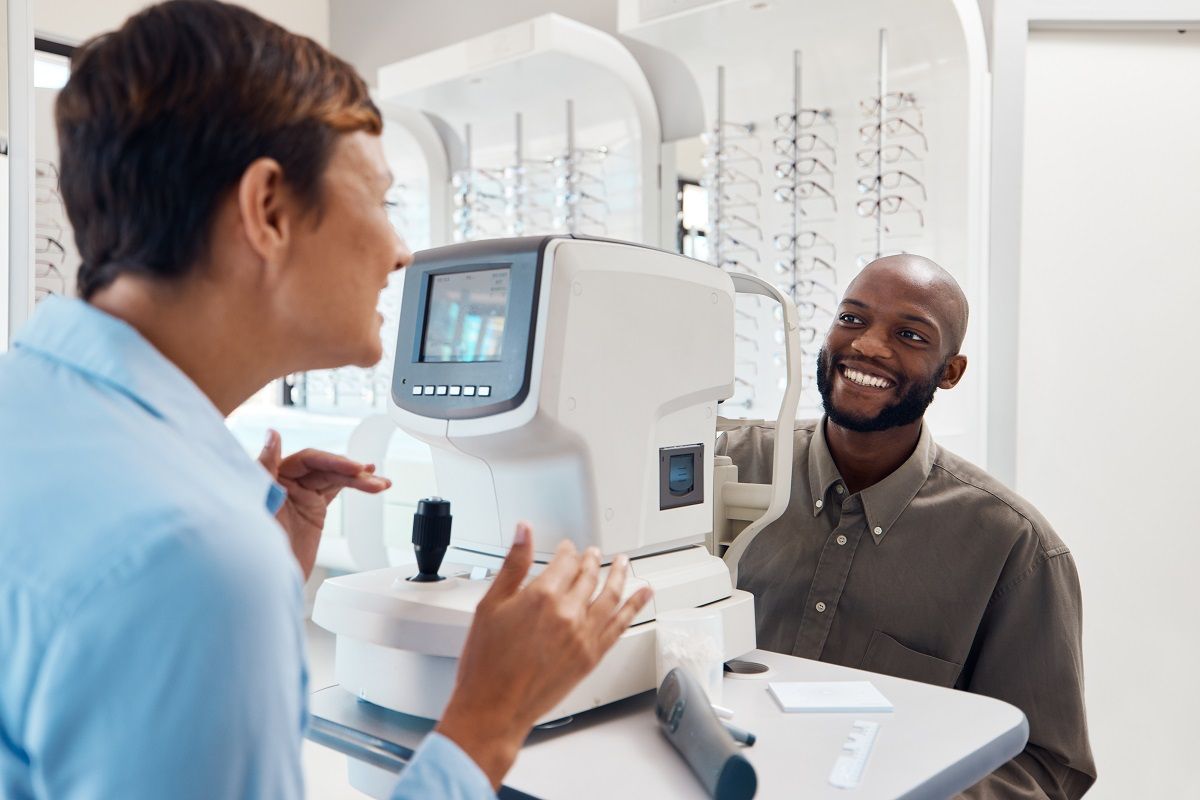What are the symptoms of retinal vein occlusion?
The symptoms of retinal vein occlusion (RVO) can vary depending on the severity and location of the blockage in the retinal vein. Common symptoms include:
- Sudden, painless vision loss: This is the most common symptom and can range from mild to severe. The vision loss may affect part or all of one eye.
- Blurred vision or distorted vision: Vision may appear hazy, blurry, or wavy. Objects may seem smaller or larger than they are.
- Floaters: Small spots, lines, or shapes that drift across your field of vision may suddenly appear. These are caused by small clumps of blood or debris in the vitreous gel of the eye.
- Changes in color vision: Colors may appear less vibrant or faded.
- Dark spots or a shadow in the field of vision: You may notice a dark area in your vision, usually on the side, which corresponds to the area of the retina affected by the occlusion.
- Distorted vision: Straight lines may appear bent or wavy, especially when the macula (the central part of the retina responsible for detailed vision) is involved.
- Vision that fluctuates: Vision may come and go or worsen over time, especially if the occlusion is partial or there is swelling in the retina.
It’s important to seek immediate medical attention if you experience any of these symptoms, as prompt treatment can help prevent further vision loss.
What are the causes of retinal vein occlusion?
Retinal vein occlusion (RVO) occurs when a blood clot blocks a vein in the retina, the light-sensitive tissue at the back of the eye. The exact cause of this blockage can vary, but several risk factors and underlying conditions are associated with the development of RVO:
- Atherosclerosis: Hardening and narrowing of the arteries can lead to increased pressure on the retinal veins, making them more prone to blockage.
- High blood pressure (hypertension): Elevated blood pressure can damage blood vessels, including those in the retina, increasing the risk of clot formation.
- Diabetes: Diabetes can cause damage to the blood vessels in the retina, increasing the risk of vein occlusion.
- High cholesterol levels: Elevated cholesterol can lead to the formation of plaques in blood vessels, contributing to the narrowing and blockage of retinal veins.
- Glaucoma: Increased pressure inside the eye, as seen in glaucoma, can affect blood flow and increase the risk of vein occlusion.
- Blood clotting disorders: Conditions that affect blood clotting, such as antiphospholipid syndrome or Factor V Leiden mutation, can increase the risk of developing clots in the retinal veins.
- Age: Retinal vein occlusion is more common in older adults, typically over the age of 50.
- Smoking: Smoking can damage blood vessels and contribute to the development of conditions that increase the risk of vein occlusion.
- Inflammatory conditions: Inflammation of blood vessels, as seen in conditions like vasculitis, can increase the risk of retinal vein occlusion.
- Obesity: Being overweight can contribute to several risk factors, such as high blood pressure, diabetes, and high cholesterol, which are associated with RVO.
Understanding and managing these risk factors can help reduce the likelihood of developing retinal vein occlusion.
What is the treatment for retinal vein occlusion?
Treatment for retinal vein occlusion (RVO) focuses on managing the complications and improving vision, as well as addressing any underlying conditions that may have contributed to the blockage. The treatment options can vary depending on the severity of the occlusion and whether it is a central retinal vein occlusion (CRVO) or branch retinal vein occlusion (BRVO). Here are the primary treatment approaches:
- Intravitreal Injections: Medications are injected directly into the eye to reduce swelling of the retina (macular edema) and improve vision. The main types of drugs used include anti-vascular endothelial growth factor (anti-VEGF) agents like ranibizumab, aflibercept, or bevacizumab, which help decrease abnormal blood vessel growth and leakage. Corticosteroids, such as dexamethasone implants, may also be used to reduce inflammation and swelling.
- Laser Treatment (Photocoagulation): Laser therapy is used to treat complications such as macular edema or the growth of abnormal blood vessels (neovascularization). Focal laser treatment can seal leaking blood vessels, while pan-retinal photocoagulation (PRP) may be used to reduce the risk of further vision loss in cases where neovascularization is present.
- Management of Underlying Conditions: Controlling systemic conditions that contribute to RVO, such as high blood pressure, diabetes, and high cholesterol, is crucial. This might involve medication adjustments, lifestyle changes, or both.
- Observation: In some cases, especially when the occlusion is mild, doctors may choose to monitor the condition without immediate intervention. Regular follow-up appointments are essential to assess the progression and determine if treatment is needed later.
- Vitrectomy: In severe cases or when complications like vitreous hemorrhage occur, a surgical procedure called a vitrectomy may be performed. This involves removing the vitreous gel from the eye to clear blood and scar tissue.
- Anticoagulation Therapy: If there is a blood clotting disorder contributing to the occlusion, blood thinners or anticoagulants may be prescribed to reduce the risk of further clots.
- Healthy Lifestyle Changes: Patients are often advised to adopt a healthy lifestyle, including a balanced diet, regular exercise, quitting smoking, and reducing alcohol consumption, to improve overall vascular health and reduce the risk of future occlusions.
The treatment plan is tailored to each patient’s specific situation, and early intervention can help prevent further complications and preserve vision. Regular monitoring and follow-up with an ophthalmologist are important to manage the condition effectively.

Leave a Reply
You must be logged in to post a comment.